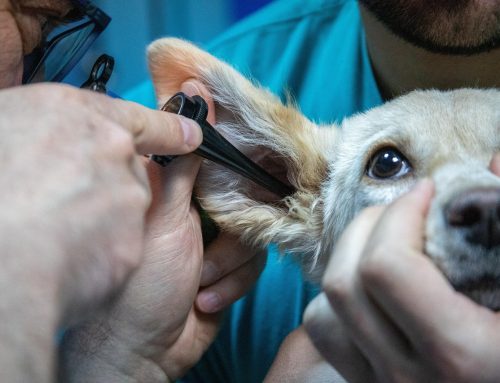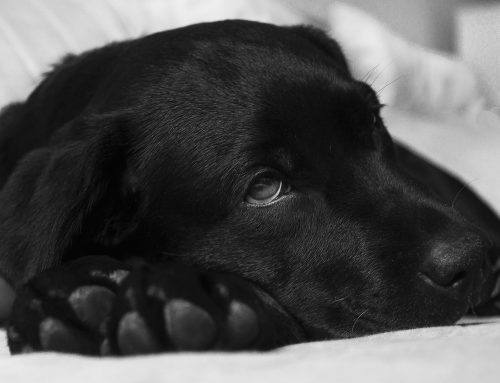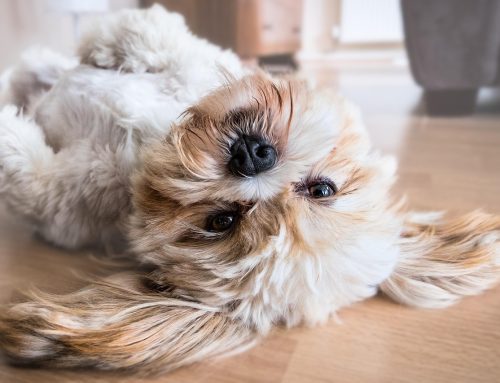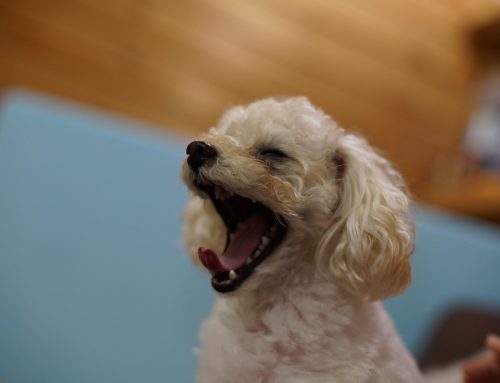
Table of Contents
Puppies are born unable to see, hear, or walk steadily. For the first days of life, they rely entirely on their mother for warmth, protection, and nourishment. One of the biggest milestones in a puppy’s early development is when they open their eyes for the very first time. This moment marks the beginning of their awareness of the world and is a sign that their body and senses are developing on schedule. Understanding when puppies open their eyes, how their vision develops, and what to expect during this stage can help new pet owners support healthy growth.
Why Puppies Are Born With Their Eyes Closed
Unlike many other animals, puppies enter the world in a very underdeveloped state. Their eyes and optic nerves are not fully formed at birth, which is why their eyelids remain sealed shut. This closed state protects the delicate eye tissues as they continue to grow. Opening the eyes too soon can expose them to irritation, infection, and light that is too strong for their developing vision. Keeping their eyes closed ensures they remain safe while their bodies finish the earliest stages of development.
When Puppies Usually Open Their Eyes
Most puppies begin opening their eyes between 10 and 14 days old. Some may open one eye first and the other a day later, and a few may take up to 16 days before both eyes are fully open. The process is slow and gentle. Puppies do not suddenly wake up and open their eyes wide; instead, their eyelids gradually loosen and part over several days.
Even once the eyes are open, a puppy’s vision is far from clear. Their eyes appear cloudy or blue-gray at first, and their eyesight remains blurry for several weeks. During this early stage, puppies rely mostly on scent, warmth, and touch to navigate.
How Puppy Vision Develops
Opening their eyes is only the beginning. Full vision takes much longer to develop. During the third and fourth week of life, puppies start to recognize shapes, movements, and the presence of their littermates. Their eyes begin adjusting to light, and their brain starts forming visual connections that help them understand their surroundings.
By five to six weeks old, most puppies can see well enough to explore confidently, play, and interact with people. Their permanent eye color also begins to show during this time. While many puppies start with blue-gray eyes, their true color may shift to brown, amber, or a deeper shade as they grow.
If you want to support healthy development, products like soft puppy toys can encourage early sensory learning:
https://www.amazon.com/Multipet-Lambchop-Plush-Dog-Toy/dp/B0009ZD3VS
What Not to Do When Puppies Are Opening Their Eyes
Because puppies are extremely sensitive at this stage, it’s important not to force their eyes open or interfere with the process. Never try to separate their eyelids, even if you’re worried they are taking longer than expected. Letting the eyes open naturally prevents injury and infection.
If a puppy’s eyelids appear swollen, crusted, or stuck closed past the two-week mark, it may be a sign of infection. In those cases, a veterinarian should examine them right away. Warm compresses recommended by your vet or products formulated for early-eye hygiene may help, such as:
- Vetericyn Eye Wash for Pets: https://www.chewy.com/vetericyn-plus-antimicrobial-pet-eye/dp/116998
Always check with a veterinarian before applying anything to a young puppy’s eyes.
When Puppies Begin Responding to the World
By the time puppies reach three to four weeks old, they become more active and curious. Their eyes and ears are now open, and they start responding to movement, light, and sound. This is also when their personalities begin to shine. They may follow people with their eyes, watch their littermates play, or try to explore their surroundings more confidently.
Even though their vision is improving, young puppies still rely heavily on their noses. Scent plays a major role in helping them understand their world, locate their mother, and recognize familiar people.
Early Socialization After Eyes Open
Once puppies can see clearly, socialization becomes an important part of their growth. Gentle handling, exposure to new sounds, and supervised play all help them develop into confident adult dogs. Puppies should be introduced to new experiences slowly so they don’t become overwhelmed.
Some breeders and caregivers use early neurological stimulation exercises or sensory play mats to support puppy development. Many pet parents also use lightweight puppy toys or teething rings to encourage early exploration:
- Nylabone Puppy Chew Teething Ring: https://www.amazon.com/Nylabone-Teething-Ring-Puppies-Flavor/dp/B0002ASQJ4
These tools help puppies learn while keeping them safe as their vision and coordination improve.
Frequently Asked Questions About When Puppies Open Their Eyes
Do all puppies open their eyes at the same time?
No. Some open sooner, some later. Most open their eyes between 10 and 14 days old, but it can vary based on breed, size, and genetics.
Why are my puppy’s eyes cloudy after they open?
Cloudiness is completely normal. Puppies’ eyes appear blue or milky at first and become clearer as their vision develops over the next few weeks.
What if my puppy hasn’t opened their eyes by two weeks?
If a puppy reaches two weeks without any sign of their eyelids loosening, it’s best to contact a veterinarian to check for infection or developmental issues.
Can I clean a puppy’s eyes?
You should only clean a puppy’s eyes if instructed by a vet. Products like dog-safe saline or eye washes should be approved before use.
When can puppies see clearly?
Most puppies begin seeing clearly around five to six weeks old, although their vision continues refining for several months.
Watching A Puppy Open Their Eyes For The First Time Is A Special Moment
Watching a puppy open their eyes for the first time is a special moment. It marks the beginning of their journey into the world, where they can see their mother, their littermates, and eventually their human family. By understanding when and how this process happens, you can support healthy development and ensure your puppy grows into a confident, well-adjusted dog.
Whether you’re caring for a newborn litter or simply curious about early puppy development, knowing what to expect helps you keep your puppy safe, comfortable, and thriving. And once that little face is fully visible, the real fun—and bonding—begins.






